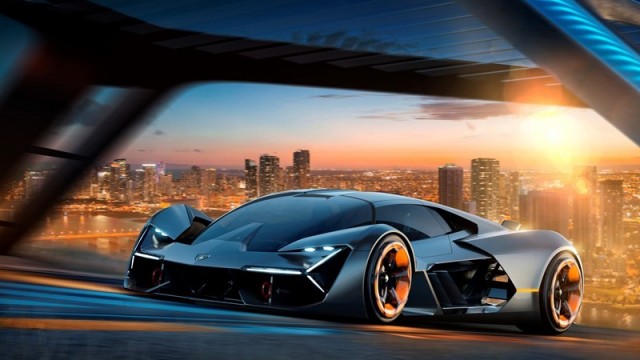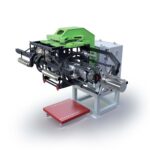Just like the Huracan, Murcielago and the Reventon, the Terzo Millennio borrows much of its design from an FA-22 Raptor. It’s all angles, flat surfaces and vents – and if you’re a fan of both supercars and sci-fi films, it looks pretty amazing. However, as amazing as it looks, the Terzo Millennio isn’t just a styling exercise, it’s also a joint project with MIT designed to explore future supercar tech. For example, the Terzo Millennio is no ordinary electric car. Lamborghini claims that batteries are too slow at transferring power, so it’s working with MIT to develop supercapacitor technology for each wheel of the car. That way, it’ll have the performance you’d expect from Lamborghini, but with a more sustainable power source. What’s more, the Lamborghini also features a self-healing carbon-fibre skin, that would fix cracks or damage on the fly. It’s not clear how the car would do this, but the car’s designers say it will be able to monitor the health of its carbon fibre frame, and fix things when needed. Lamborghini seems to release an outrageous supercar every other week, but the Millennio is something different. Instead of a supercar that looks like a fighter-jet with a V12 engine in the back, Lamborghini has made a supercar that looks like a fighter-jet – powered by supercapacitors. Simply put, the Terzo Millennio sees Lamborghini finally preparing to break away from the V12 petrol engines it’s always become known for, and move to the EV age. People have always questioned how supercar manufacturers will differentiate their electric vehicles in the future, and now Lamborghini and MIT are working together to find out.













